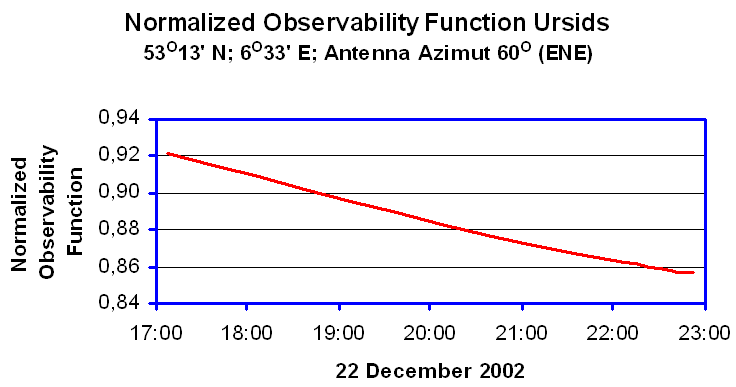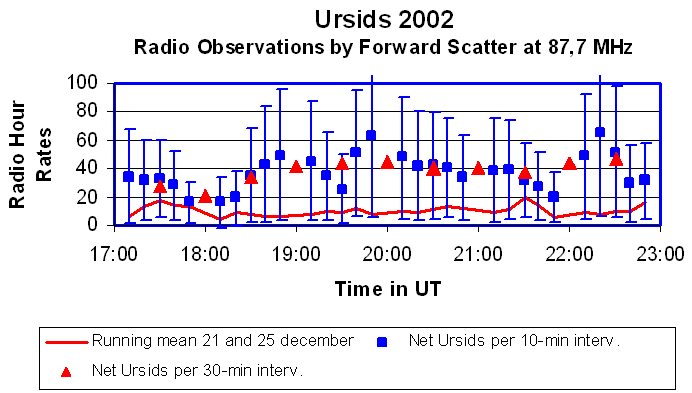Stream : Ursids, 22 December 2002
Observer : Eisse Pieter (Peter) Bus
Location : Groningen, Netherlands (6O 33' E, 53O 13' N)
Frequency : 87.7 MHz
Transmitter
Locations : Several from 0.1 - 10 kW, (Highest: 10kW at Flensburg, Germany), distance 260 km
Antenna : Yagi, 3 elements, geographical azimuth 60O (ENE), elevation 45O.
Receiver : Bearcat UBC 860 XLT Scanning radio, sensitivity 0.5 uV.
Observation
Method : Listening and counting in 5-minute intervals for only long lasting signals >1sec.
"Sporadic" activity observed on 21 and 25 December 2002.

Figure 1 (the normalized observability function)
Hines [1] has developed the theory of the variation in the number of shower meteors observed by forward scattering of radio waves. In his publication he gives an expression for the number of shower meteors counted in a given observation period for a given meteor radiant position at the mid-point of a transmitter-receiver path lengths of 1000 km. The calculated values of this "observability function" for the Ursids were normalized for the given observation period. Following the graph, theoretically 92% of the Ursids were detected at the beginning of the observational period and 86% at the end.

Figure 2 (the shower rates)
The net values of the shower meteors (assuming Ursids) were calculated by subtracting the mean "sporadic" meteor counts as observed during the same observation periods. For each period, this net shower value was divided by the value of the normalized observability function to obtain the estimated true shower activity. The net results give no clear evidence for peak activity around 19:00 and 20:40UT. After Esko Lyytinen [2] there was a probability that peak activity could occur around both times. Only a broad higher level above sporadic activity is on December 22 visible in the observations. The bars represent two sigma errors.
[1]. Hines, C.O., Can. Journ. Phys. 22, pp. 493-503, 1955. [2]. Lyytinen, E., E-mail message on 9 December 2002.